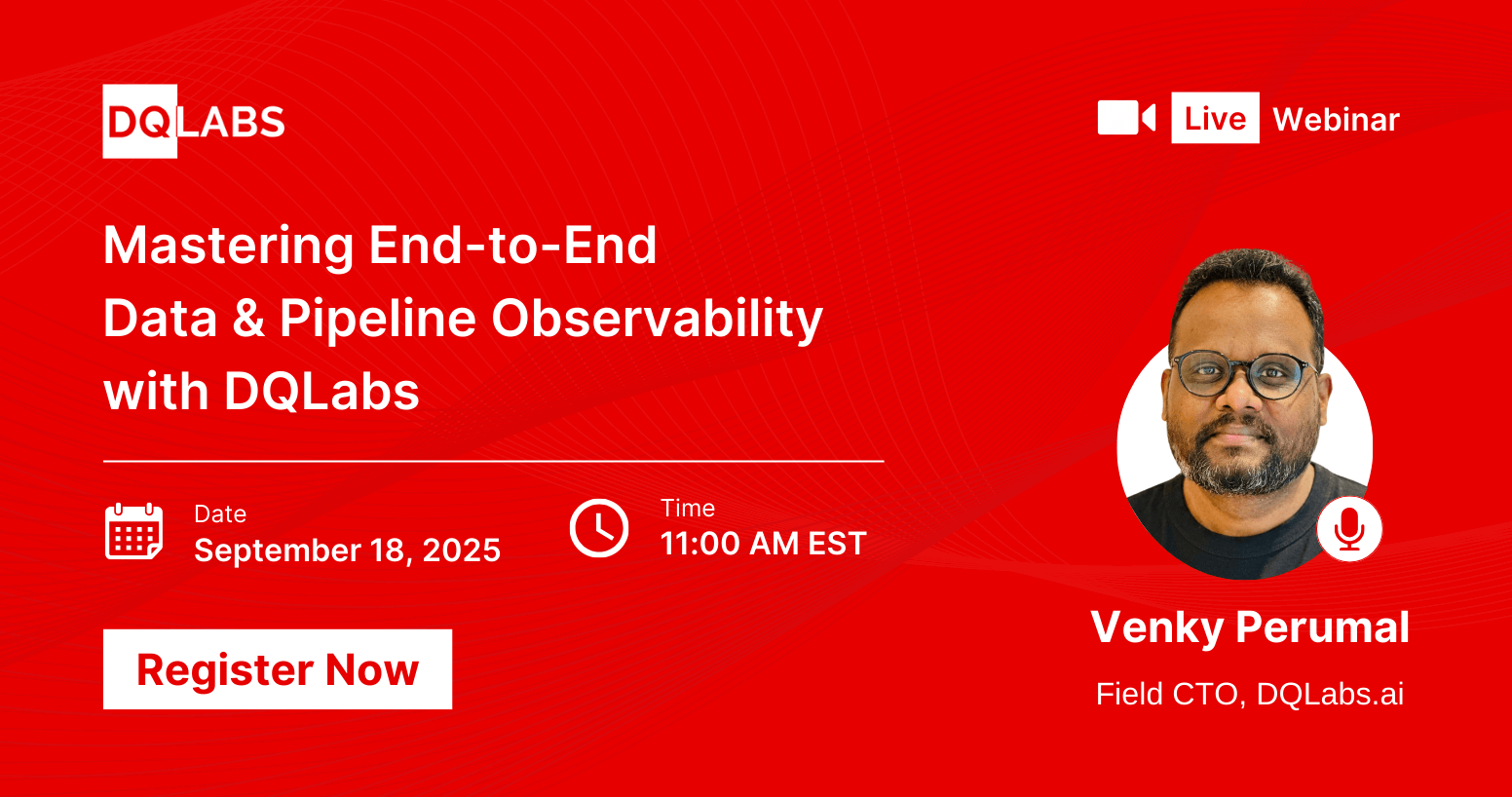Choosing Between DQLabs and Ataccama?


Get clear insights into where the product capabilities truly differ!
DQLabs
Ataccama
DQLabs
Ataccama
Agentic AI-Powered Data Observability and Data Quality Platform
Unified platform integrating data quality, observability, semantics, and agentic AI-driven data management for seamless data reliability and trust.
Ataccama’s platform is segmented into multiple modules, leading to a steeper learning curve, fragmented user experience, and limited automation for business users—who often struggle to access advanced features without technical support.
Operational Integration & Streamlining
Eliminates the need for multiple disconnected tools, offering consolidated insights and streamlined workflows across the data lifecycle.
Requires separate module setup and configuration, adding to the complexity and user learning curve.
Persona-Specific User Experience
Built for every persona with out-of-the-box dashboards for engineers, stewards, leaders, scientists, and architects. Dynamic, role-optimized UI ensures actionable insights.
Provides dashboards and configurable views but lacks fully dynamic, role-optimized interfaces tailored specifically for distinct data personas, limiting personalized, actionable insights.
DQLabs
Ataccama
Multi-Layered Data Observability
Provides comprehensive observability across multiple layers: data health and reliability, pipeline health, cost optimization, and data usage.
Provides data health, pipeline observability, and anomalies, but does not provide comprehensive cost and usage observability insights.
Agentic AI-Powered Data Observability
Observability agents deliver unified, real-time monitoring, actionable dashboards, predictive analytics, and self-healing across pipelines and workflows.
Ataccama supports real-time health checks and anomaly detection with central dashboards, but predictive analytics and automated remediation remain limited and less agent-driven.
Interactive Data Lineage Visualization
Offers an interactive, animated lineage explorer that lets users dynamically visualize schema changes, data flows, volume, and freshness trends over time, automatically tracing dependencies across systems.
Provides lineage visualization integrated into its platform. However, the interactive capabilities, historical trend animation, and auto-tracing features are less advanced compared to DQLabs; lineage navigation is more static and less granular.
DQLabs
Ataccama
Depth and Breadth of Data Quality Coverage
Combines out-of-the-box, no-code custom rules, and AI-augmented custom data quality rules for complete depth and breadth of data quality coverage.
Robust rules library, now with GenAI to automate some rules, but needs more supervision and validation.
Agent-Driven Prioritization & Scale Management
Prizm computes asset criticality using lineage impact, usage, freshness, and business importance. Agents automatically focus profiling, quality checks, and alerts on active, high-impact data while de-prioritizing cold or low-risk assets.
Ataccama relies on rule configuration, profiling settings, and steward-defined priorities. While it supports data quality scoring and lineage, it does not autonomously compute asset criticality or dynamically focus processing on high-impact vs cold data using agents.
Autonomous Scheduling & Adaptive Profiling
Agents continuously decide when to run profiling and quality jobs and dynamically adjust profiling depth per attribute based on criticality and behavior—no static schedules required.
Ataccama supports scheduled profiling and quality jobs, but execution is configuration-driven. Profiling depth and job frequency are statically defined and do not autonomously adapt based on changing data behavior, usage, or criticality.
Policy-to-Rule Automation (LLM-Driven Governance)
Prizm ingests governance or compliance documents and uses LLMs to automatically extract glossary terms, domains, and enforceable data quality rules—operationalizing policies end-to-end.
Ataccama supports policy management and rule authoring, but translating governance documents into executable data quality rules is manual or template-based. There is no documented LLM-driven workflow that ingests policy text and auto-generates enforceable rules end-to-end.
Depth and Breadth of Metrics Coverage
Offers wide-ranging, granular metrics spanning data quality, reconciliation, lineage, drift, freshness, pipeline health, user workload, and spend metrics, ensuring in-depth monitoring.
Provides basic data quality metrics and pipeline observability. However, comprehensive coverage of user workload and spend metrics is not emphasized, limiting full operational insights.
Business metric recommendations
Through a conversational interface, Prizm recommends business-specific, multi-column/multi table data quality rules, auto-generates the SQL with rationale, and lets users activate and monitor them in one click.
Ataccama enables business rule creation and complex validations, but rule definition is primarily form- or logic-driven. It does not offer a conversational interface that generates multi-table, business-specific DQ metrics with auto-generated SQL and rationale in one step.
Automated Rule Inheritance
Unique rule inheritance via active semantic layers ensures consistent, scalable rule application across domains, reducing manual overhead and improving data trust.
Lacks automated rule inheritance based on semantic layers; rule propagation requires manual setup and validation, limiting scalability and consistency.
DQLabs
Ataccama
Metadata Discovery and Data Classification
Employs an AI-driven Auto Semantics engine that automates metadata discovery, classification, business-term mapping, and context-aware rule application without manual mapping.
Lacks deep semantics automation, business term mapping requires manual mapping, like most catalogs.
Semantic Rule Propagation and Inheritance
AI-driven propagation of rules to all similar data assets for consistency and auditability.
Provides AI-driven rule suggestions, but automated rule inheritance for semantic terms is not available.
DQLabs
Ataccama
Multi-Agentic AI Architecture
Native multi-agentic AI architecture: Specialized agents collaboratively address discovery, quality, cataloging, governance, observability, and remediation, with intelligent coordination.
Ataccama mainly uses a single GenAI agent to guide automation; cross-agent collaboration and contextual learning are not natively supported.
AI Stewardship
Explicit AI stewardship framework spanning Autonomous, AI-Assisted, AI-Collaborated, and Human-Led modes, with clear control, explainability, and human oversight across quality, observability, governance, and remediation.
Ataccama uses AI/ML for classification, matching, and recommendations, but does not expose a formal AI stewardship operating model (autonomous vs assisted vs human-led) with explicit controls, explainability tiers, and governed autonomy across DQ and observability workflows.
Federated Governance
Native federated governance across Domains, Applications, Data Products, and Semantics enabling distributed ownership while maintaining centralized policy control and auditability.
Ataccama supports domain-oriented governance and stewardship workflows, but governance execution remains largely centralized and configuration-driven. It does not natively implement agent-driven, federated governance across domains, applications, and data products with runtime enforcement.
Data Contracts & SLA Enforcement
Supports data contracts and SLA enforcement at semantic, domain, and product levels, with automated monitoring, breach detection, and escalation aligned to business criticality.
Ataccama supports data quality thresholds and monitoring, but there is no native concept of data contracts with SLA definitions tied to domains or data products, nor automated breach detection and escalation aligned to business criticality.
Business Impact Visualization
Business impact visualizer maps data issues to business KPIs and shows propagation/impact for targeted resolution with data trust score improvement.
Lacks dedicated business impact visualization linking data issues directly to KPIs and trust score improvements.
Reducing SME burden
Agentic AI reduces SME effort—autonomous detection, context, governance, and remediation at scale.
Emerging governance automation, but still dependent on pre-set policies and user-driven agent configuration.
DQLabs
Ataccama
Seamless Bi-Directional Metadata Exchange
Deep, bi-directional metadata exchange with leading external catalogs (Collibra, Alation, Atlan); enables seamless sharing of business terms and pushing trust scores/quality metrics into governance platforms; flexible in best-of-breed environments.
Ataccama mainly uses its own metadata catalog, with limited integration to external systems like Collibra or Alation, restricting flexibility in best-of-breed setups.


DQLabs Is a Visionary in the
2025 Gartner® Magic Quadrant™
for Augmented Data Quality Solutions
GARTNER is a registered trademark and service mark of Gartner, Inc. and/or its affiliates in the U.S. and internationally and is used herein with permission. All rights reserved.

